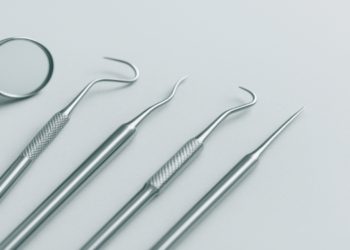Hair loss among women is far more common than most people realise. Current estimates suggest that around 40% of women in the UK will experience some degree of female pattern hair loss by the time they reach 50, with numbers rising significantly after menopause. Despite these statistics, the condition remains largely under-discussed, leaving many women feeling isolated and uncertain about their options. Consulting a private dermatologist in London or exploring treatments independently both require understanding the condition as a crucial first step. This guide explores what British women need to know about female pattern hair loss and the treatment approaches now available.
Understanding Female Pattern Hair Loss
Female pattern hair loss, often abbreviated as FPHL, refers to a gradual thinning of hair that typically occurs across the top and crown of the scalp. Unlike male pattern baldness, which usually starts with a receding hairline and can progress to complete baldness, women generally retain their frontal hairline while experiencing diffuse thinning that becomes increasingly noticeable over time.
One of the most persistent misconceptions is that hair loss only happens to older women. In reality, FPHL can begin as early as the late twenties or thirties, though it becomes more prevalent during and after perimenopause. Professional women in their forties and fifties are particularly affected, often noticing changes during an already demanding phase of their careers.
Another common myth is that washing hair too frequently or using certain products causes the condition. FPHL is primarily driven by genetic and hormonal factors, not external hair care practices. Understanding this distinction helps women focus on effective interventions rather than blaming themselves for lifestyle choices that have minimal impact.
The Impact Beyond Appearance
For many professional women, hair loss carries consequences that extend far beyond aesthetics. Research consistently shows that FPHL significantly affects psychological well-being, with many women reporting decreased self-confidence, heightened anxiety, and even symptoms of depression.
In workplace settings, this impact becomes particularly pronounced. Many women describe feeling less authoritative in meetings, avoiding networking events, or spending considerable time and mental energy concealing thinning areas. For UK businesswomen who already navigate gender-related challenges in corporate environments, hair loss can feel like an additional barrier to being taken seriously.
The good news is that awareness is growing. More women are speaking openly about their experiences, and the stigma surrounding female hair loss is gradually diminishing. This cultural shift means that seeking treatment is increasingly viewed as proactive self-care rather than vanity.
Modern Treatment Approaches
Today’s treatment landscape offers more options than ever before, ranging from pharmaceutical interventions to advanced clinical procedures.
Evidence-Based Medical Treatments
Minoxidil remains the gold standard for treating FPHL. Available in liquid and foam formulations, this topical treatment works by prolonging the growth phase of hair follicles and increasing blood flow to the scalp. Results typically become visible after four to six months of consistent use.
For women whose hair loss has hormonal components, anti-androgen medications may be prescribed. These work by blocking the hormones that can miniaturise hair follicles. Additionally, newer pharmaceutical options are becoming available in the UK market, providing alternatives for women who don’t respond optimally to first-line treatments.
Advanced Clinical Options
Platelet-rich plasma therapy has gained considerable traction in recent years. This procedure involves drawing a small amount of the patient’s blood, processing it to concentrate the platelets, and injecting it into the scalp. The growth factors in PRP can stimulate dormant hair follicles and promote new growth.
Low-level laser therapy offers another non-invasive option. These devices deliver specific wavelengths of light to the scalp, potentially improving cellular activity within hair follicles. Many women appreciate this treatment for its convenience, as some devices can be used at home.
Hair transplant techniques have also evolved significantly for female patients. Modern approaches allow for natural-looking results while respecting women’s different hair loss patterns and aesthetic goals.
Lifestyle and Nutritional Support
While medical treatments address the condition directly, supporting overall health can optimise results. Ensuring adequate intake of iron, vitamin D, biotin, and zinc supports healthy hair growth. Stress management is equally important, as chronic stress can exacerbate hair shedding and potentially worsen FPHL.
Maintaining optimal scalp health through gentle cleansing and avoiding harsh chemical treatments creates a better environment for hair growth and treatment effectiveness.
What UK Women Should Look For
When seeking treatment, credibility matters enormously. Look for practitioners with specific expertise in female hair loss, not just general aesthetic services. Qualified dermatologists, trichologists, and hair restoration specialists should be able to provide evidence for their recommended approaches.
Key questions to ask include: What diagnostic tests will be performed? What realistic outcomes can be expected? What is the timeline for seeing results? Providers who offer personalised treatment plans based on thorough assessment are typically more reliable than those promoting one-size-fits-all solutions.
Be wary of clinics making extravagant claims or pressuring immediate decisions. Effective FPHL treatment requires patience and realistic expectations, and ethical practitioners will be transparent about this.
The Future of Female Hair Loss Treatment
The landscape continues to evolve rapidly. Stem cell research shows promise for regenerating hair follicles, while gene therapy investigations may eventually allow for targeted interventions. The UK market is seeing increased investment in women’s hair health, with specialised clinics expanding their services to meet growing demand.
Moving Forward
Female pattern hair loss affects millions of UK women, yet effective treatment options exist and continue to improve. Taking action begins with understanding the condition and consulting qualified professionals who can develop personalised approaches.
Specialist clinics like Drophelia are making evidence-based treatments increasingly accessible, empowering women to address hair loss with confidence and professional support. The journey to healthier hair starts with a single informed step.












































































